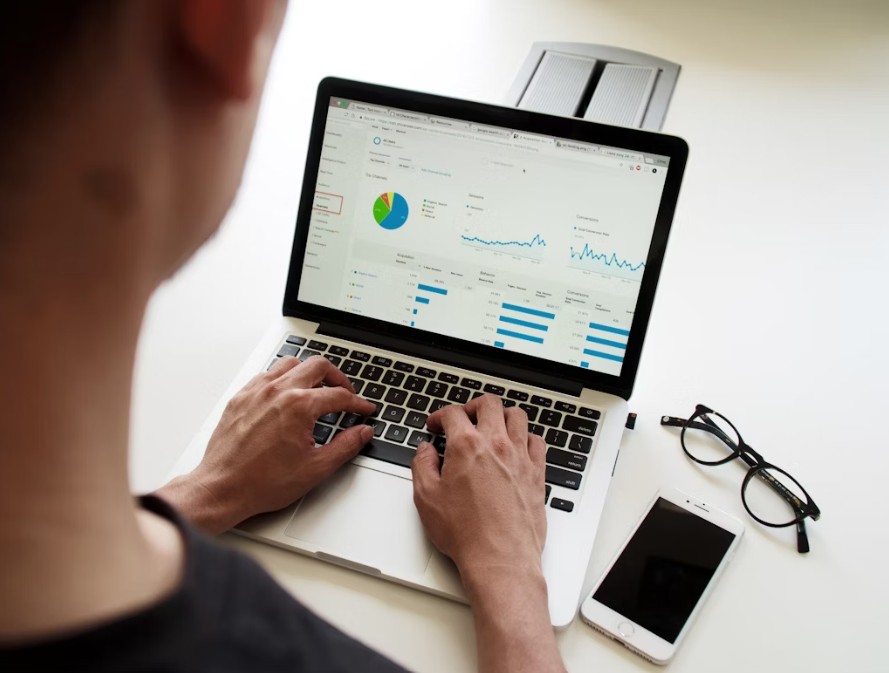In today’s omnichannel world, it’s no longer enough to hit a mailbox and hope for a response. Marketers are realizing the power of combining digital and direct marketing to boost advertising performance and guide prospects from awareness to conversion. But transitioning your direct mail audience into a digital environment isn’t as simple as flipping a switch – it takes thoughtful strategy, smart data, and a clear understanding of how the channels work together.
Here’s what to consider when bringing your direct mail audience into digital campaigns.
1. Recognize the Shift in Channel – and Align to Your Conversion Path
In both digital and direct marketing, understanding how each channel supports your conversion goal is critical. Your audience may be the same, but how they engage in each channel can be very different. In other words, what matters most is where your conversion happens.
If your goal is an online sign-up or purchase, your messaging strategy should guide the consumer toward that digital endpoint – regardless of whether their first touchpoint is a mailer or an ad.
Some brands lead with direct mail to introduce the offer, then rely on digital for follow-up and conversion.
Others use digital to generate interest, then use mail to reinforce and drive action. The key is understanding the role each channel plays in your unique funnel – and adjusting creative, timing, and targeting accordingly.
2. Prep the Data for Digital Use
Postal addresses won’t get you very far in the digital space. To activate your direct mail audience online, you’ll need to:
- Match to digital IDs using an onboarding partner like our partner LiveRamp, which connects offline data – such as hashed emails, phone numbers, or device IDs – to digital identifiers.
- Include key identifiers (email, phone, etc.) in your output file to maximize match rates across platforms.
- Ensure compliance with digital privacy regulations and opt-out protocols.
Working with trusted onboarding partners like LiveRamp enables you to reach the same individuals across a wide range of digital properties – especially powerful when starting with Speedeon’s offline-sourced data foundation. If Speedeon is your data partner, simply coordinate with our team – we’ll ensure your audience is properly formatted, onboarded, and ready to activate in LiveRamp.
3. Optimize Your Model Strategy for Scale
In direct mail, campaigns often focus on the top-performing deciles to manage cost. But in digital, scale is critical – not just for reach, but to meet the minimum audience thresholds required by many platforms. Channels like connected TV (CTV), mobile in-app advertising, and contextual display often demand larger segment sizes to deliver efficiently and avoid wasted spend.
When activating a Speedeon-built model digitally, it’s often smart to go deeper into the model -beyond just the top deciles – to ensure you meet those platform requirements. This expanded reach helps unlock access to premium inventory across programmatic channels and ensures consistent delivery across the full campaign. Of course, scale should still align with your goals and budget, but digital gives you more room to optimize performance without sacrificing efficiency.
Model deciles are ranked groupings (typically in tenths) that segment your audience based on their likelihood to convert – decile 1 being the most likely, decile 10 the least.
4. Sequence for Impact, Not Saturation
The most effective cross-channel strategies aren’t random – they’re choreographed.
Sequencing should reflect your campaign goals, the typical length of your buying cycle, and where your audience is most likely to engage first. Consider factors like media costs, delivery timelines, and when your audience is primed to act.
Here’s one proven approach:
- Before mail drops: Use display or social ads to build recognition.
- During delivery: Activate video or connected TV (CTV) to reinforce the message.
- After mail arrives: Deploy retargeting ads to drive conversion.
Another example? For a digitally native brand introducing itself via direct mail, you might reverse the order:
- Start with the mail piece to provide a tangible introduction.
- Follow up with digital display to reinforce the offer.
- Close with mobile or social ads timed to when a user is most likely to convert.
No matter the order, consistency matters. Creative across digital and direct marketing channels should align visually and thematically. When consumers recognize your brand message – whether in their mailbox or on their phone – it builds trust and momentum.
5. Understand Who You Can (and Can’t) Reach
Some consumers are more reachable in one channel than another. You may have a valid email or mobile ad ID for someone without a mailable address – or vice versa. And factors like age, lifestyle, and mobility often influence which channel is more effective.
That’s why Speedeon’s ability to link consumers across data types – especially with our offline-first identity resolution – is so valuable. It allows you to maximize total audience reach while improving the overlap between channels for stronger omnichannel performance.

6. Avoid the Biggest Pitfall: One-Size-Fits-All Strategy
One of the most common missteps we see is trying to lift a direct mail strategy and drop it directly into digital – without adjusting for the dynamics of the channel.
Direct mail is typically highly targeted, with carefully crafted creative and limited reach due to cost. Digital, on the other hand, offers scale and speed – but it also requires smarter segmentation, flexible creative formats, and rapid performance feedback loops.
Take, for example, a campaign promoting a financial services offer. A direct mail piece might feature detailed product information, fine print, and a formal tone. That same content won’t translate well into a mobile banner ad or a 6-second CTV spot. Instead, the digital version should be streamlined to highlight one key benefit, include a clear call to action, and reflect the format’s strengths – like motion, sound, or contextual targeting.
7. Track What Matters, Based on the Channel
Digital metrics focus on real-time signals: impressions, clicks, video views, and on-site behavior.
Direct mail performance is tracked through matchback analysis, promo code usage, or response rates.
Before launching a campaign, decide what success looks like for each channel – and make sure everyone on your team is aligned. When possible, measure omnichannel lift to understand how the combination performs better than either channel alone.
Final Tip: Treat It as a Funnel, Not a Fork
The most successful dual-channel campaigns don’t treat mail and digital as isolated efforts. They work together as part of a unified conversion journey.
Which channel leads – and which one closes – depends on your brand strategy, audience behavior, and offer type. For some, mail introduces the message with a high-impact, tactile experience, followed by digital ads that reinforce and drive online conversion. For others, digital builds familiarity first, with mail reinforcing credibility or prompting action.
What matters most is clarity around your funnel: where consumers start, where they convert, and how each channel contributes along the way. When your data and messaging align with that path, you create more cohesive experiences – and stronger results.
Still got questions? Check our FAQs
How do you integrate digital marketing with a direct mail audience?
To activate your direct mail audience in digital channels, use a data onboarding platform like LiveRamp to match postal addresses to digital IDs (such as emails or device IDs). This lets you deliver targeted digital ads – before, during, or after the mail drop – for a cohesive cross-channel experience.
What is the benefit of combining direct mail and digital campaigns?
Pairing direct mail with digital marketing boosts performance across the board. While mail offers a physical, high-impact touchpoint, digital provides speed, scale, and real-time insights. Together, they improve reach, engagement, and conversion rates.
Would LiveRamp + Speedeon’s segments help connect direct mail audiences to digital ads?
Data onboarding tools like LiveRamp link offline data (e.g., postal addresses) to online identifiers. This allows you to reach the same audience across digital channels such as display, social, connected TV, and more.
Is direct mail still effective in a digital world?
Yes – especially when used alongside digital. Direct mail breaks through online noise and builds trust, while digital reinforces the message with repeated, targeted impressions. Used together, they deliver stronger results than either channel alone.
What’s an example of an integrated direct mail and digital campaign?
One proven approach: run digital display ads shortly before the mail lands to build recognition, reinforce the message with the physical piece, and follow up with retargeting ads to drive conversion. For some brands, especially digital-first ones, the sequence may start with mail and move online.
How does data onboarding work in direct mail campaigns?
Data onboarding takes offline customer data – like names and mailing addresses – and matches them to digital IDs. This process enables marketers to reach their existing direct mail audience through online platforms like mobile, social, or programmatic display.
Ready to Reach the Right People, Everywhere? Let’s Talk
Whether you’re just starting to test cross-channel strategies or looking to optimize an existing one, digital and direct marketing integration is key to reaching the right audience at the right time.
If you need help identifying, modeling, or activating the ideal audience across both direct mail and digital, the Speedeon team is here to help. Our experts can guide you through every step – from data strategy to execution – so your campaigns hit the right people, in the right place, at the right time. Let’s build something powerful together. Book a demo call here!

